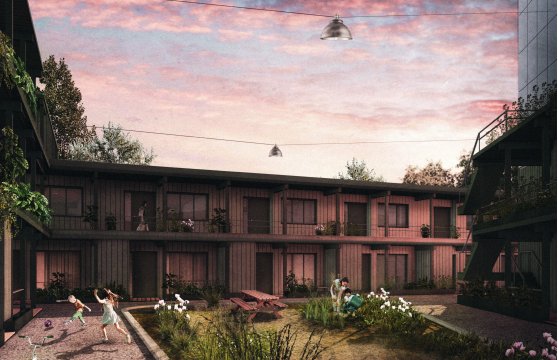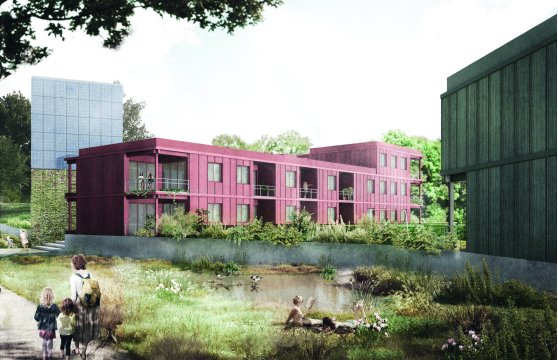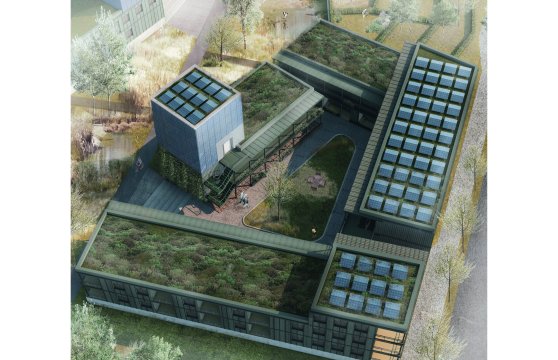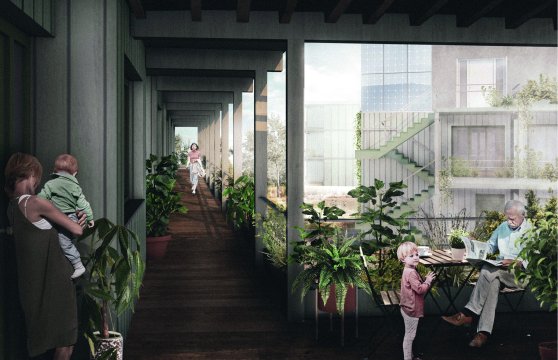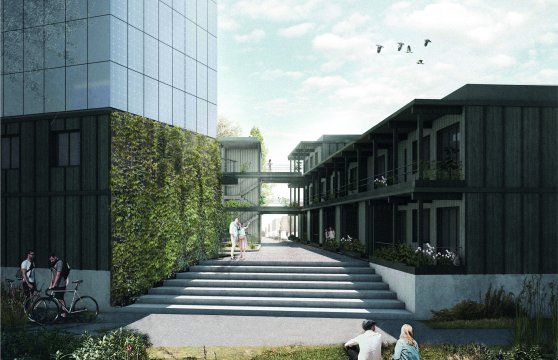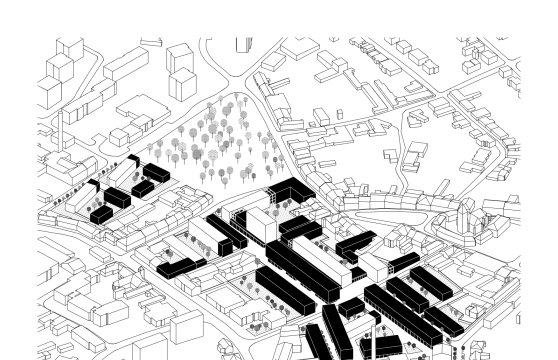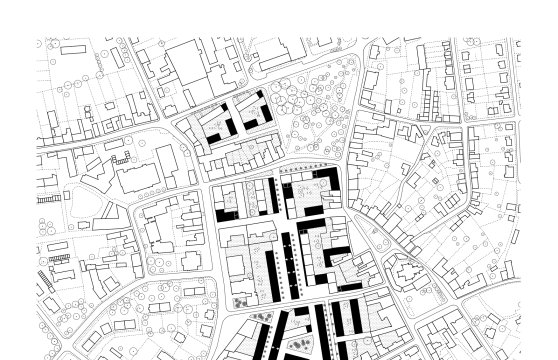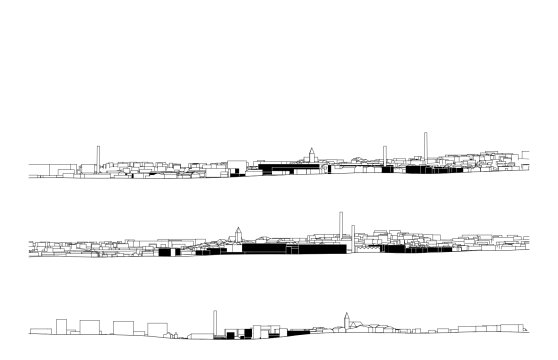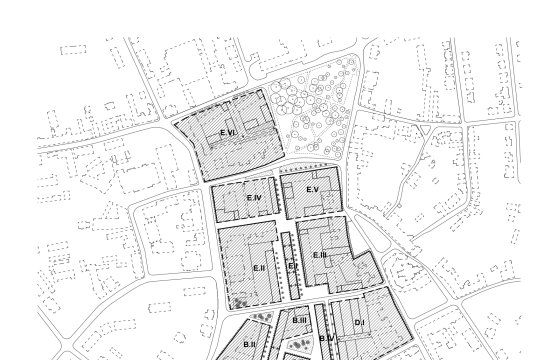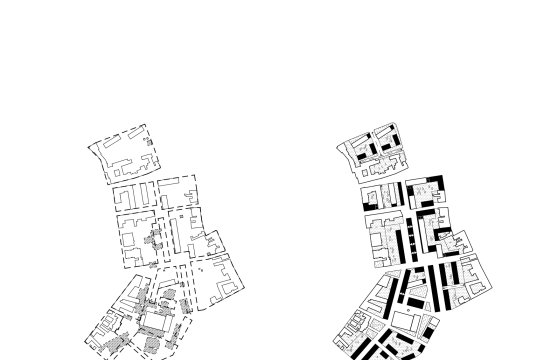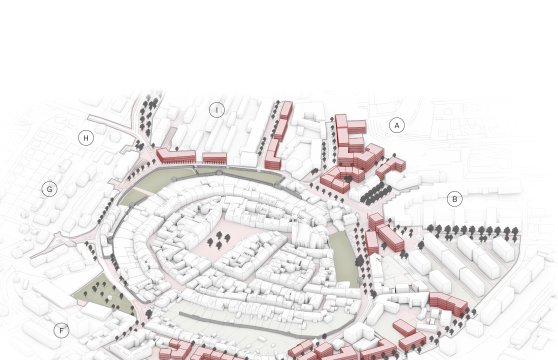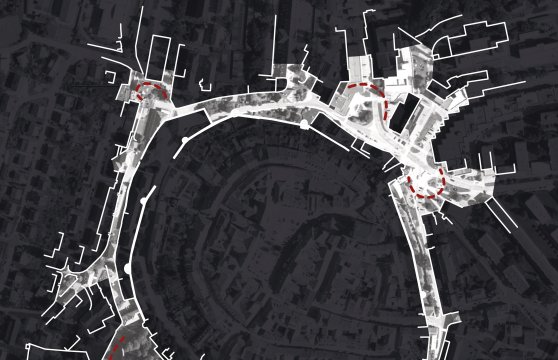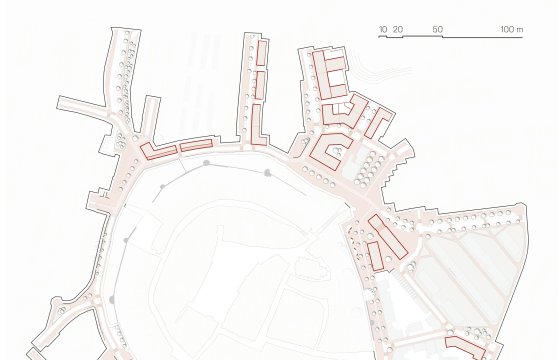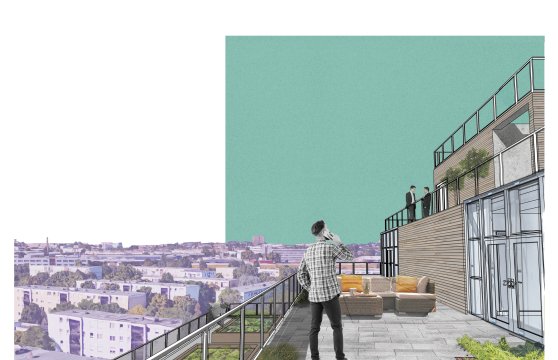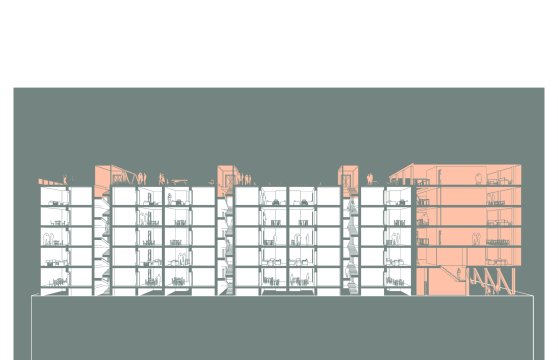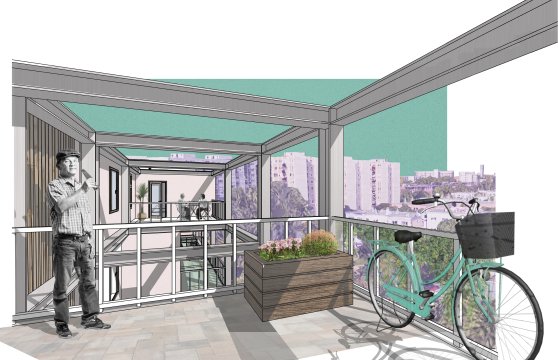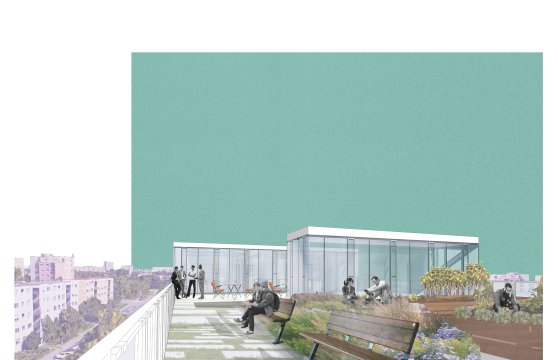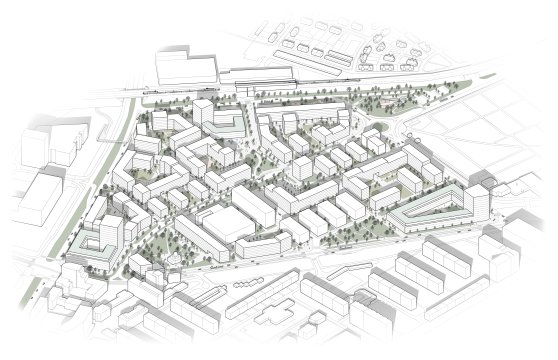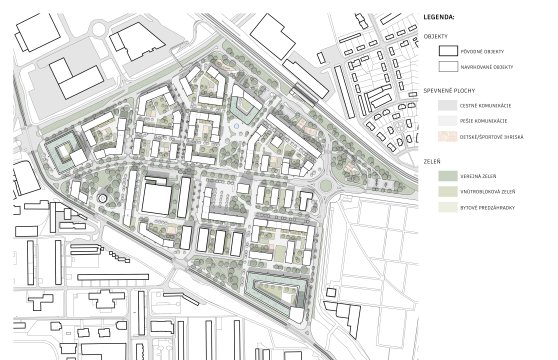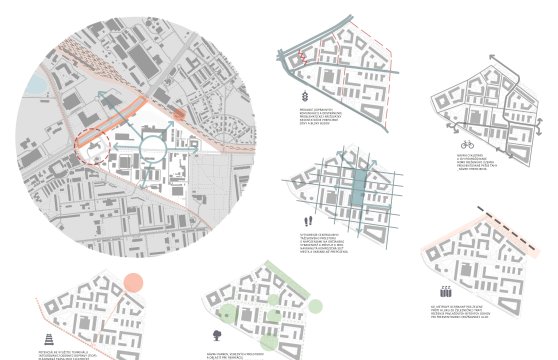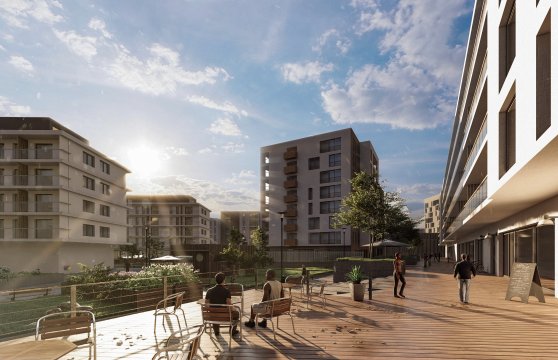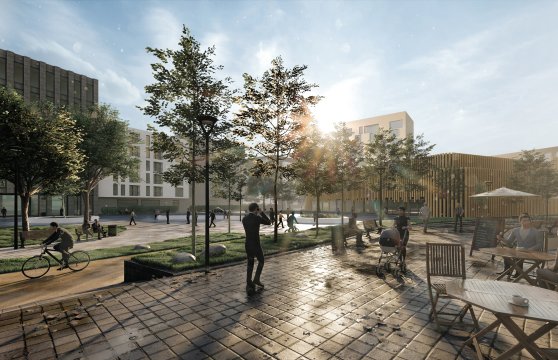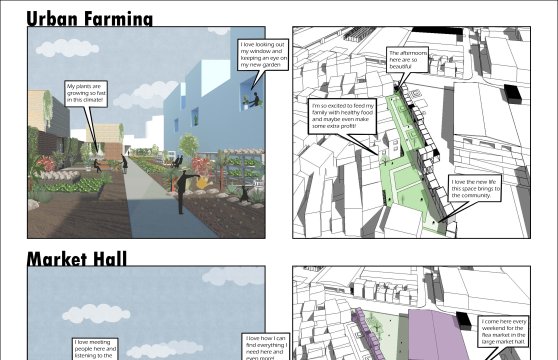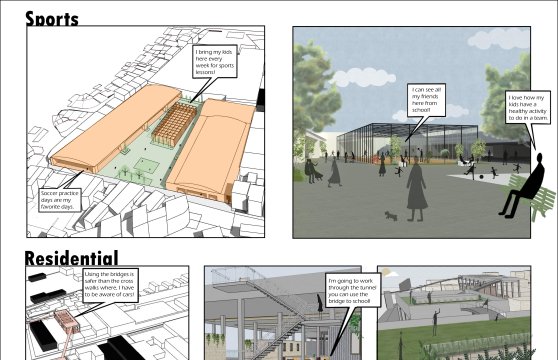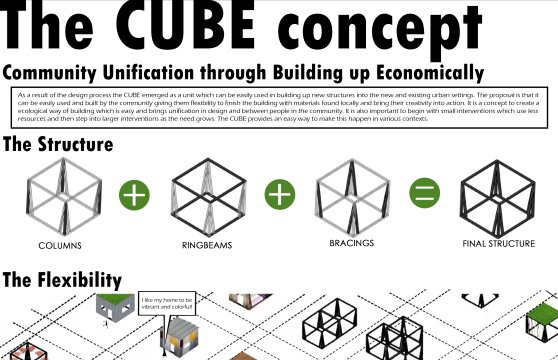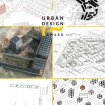"I view very positively the diverse composition of the jury, which included foreign participants," says jury chairman Petra Kunarová of the Faculty of Architecture of CTU. "Even though the jury could not meet, given the current situation, there was no lack of discussion over concrete proposals and what the jury considers to be essential in student work - whether preparedness for the profession or just the overlap - a message from students to society. It is certainly no coincidence that most of the award-winning projects emphasize the environmental and social transcendence of architecture and urban planning," explains Petra Kunarová.
In their evaluation, the judges took into account not only the resulting project, its quality and method of presentation, but also the author's imaginativeness and the degree to which the project responded to current world problems. An important parameter was the overall grasp of the subject under consideration and the clarity of the proposal. For the next years of the competition, the judges recommended creating competitive categories with regard to the type of award.
Jury
- Ing. arch. Petra KUNAROVÁ (FA CTU), chairman
- doc. Ing. arch. Gabriel KOPÁČIK, Dr. (FA VUT Brno)
- Ing. arch. Jiří KUGL (FSv CTU)
- Szábó Árpád DLA (FA BME Budapest)
- B. Arch. Peter BEDNÁR (Jakub Cigler Architekti)
- Ing. arch. Ivan GOGOLÁK (Gogolák+Grasse)
- Ing. arch. Antonín KANTA (PDM Group a. s.)
- Ing. arch. Josef MORKUS, Ph.D. (Ministery of Regional Development CZ)
- Ing. arch. Jiří PRÁŠIL (architect)
During their meeting, the jusy considered 60 applications from nine faculties of eight universities.
- 15 projects from FA VUT Brno
- 14 projects from FA CTU Praha
- 9 projects from FA STU Bratislava
- 9 projects from FSv CTU Praha
- 6 projects from FA BME Budapest
- 3 projects from FA PW Vratislav
- 2 projects from FSv TU Ostrava
- 1 project from FA PG Gdaňsk
- 1 projects from Sao Paolo Madrid
Results
In the end, the judges agreed on six awards and, on the basis of another vote, selected their ranking, awarded 3rd place to two projects and rewarded two projects.
1. place: Franziska Schenk from FA VUT Brno with her project Green Clusters
2. place: Norbert Lichý with his project Humpolec – centrum – sídliště, from FA CTU in Prague
3. place: Sára Roeselová with her project Hradební okruh – Prachatice, from FA CTU in Prague
3. place: Márton Zacher and ZSombor Hernádi with their project JALTP Additions, FA BME Budapest
Rewards:
Lukáš Bím and Jakub Čerešník from FA STU Bratislava for their project Ružinov Tomášiková_Trnavská
Sophia Ariadne Thomas, Ilham Farah Al-Hajjar, Diana Negoescu and Gabriella Dalita Brix Monteiro for their project WIMCY – Welcome into My Church Yard.
Details of winning projects:
1. place
Franziska Schenk from FA VUT Brno with her project Green Clusters
The head of the project: Nicol Galeová, Department of Experimental Creation, FA VUT Brno
The goal of this urban design is socially mixed neighborhood living in a sustainable neighborhood close to nature. The project responds to the current change in contemporary housing structures and shows the possibilities of community living without denial of privacy. It is based on the idea of living in harmony with nature and highlights an environmentally sustainable way of life. The ‘Nová Valcha’ development area is currently being built on the outskirts of Pilsen. The green clusters mark the final appearance of the new area and clearly distance themselves from the typical suburban residential structure. There are no typical family homes that are not sustainable as a form of settlement. The project will encourage residents to move closer together, which will also encourage the creation of more free spaces for everyone.
Jury evaluation:
In the context of the competition, ‘Green Clusters’ sounds like an unequivocal view of a systematic approach to the concept of similar entities in the future. The micro urbanism of clusters stands out among other integrations of the now “traditional” sustainable principles in a compelling whole. This is almost banal, but unfortunately a similar approach is still not standard today. The very convincingly presented project partly defeats the scale of the controversy, the lack of reflection on today's transport situation in more remote urbanised locations, or the expected uncontextuality of a similar systematic approach.
Nevertheless, all of these ills are surpluses of emphasis on residential and environmental detail (from private veranda areas to common public spaces), social interaction (the composition of individual "families"), energy issues and its decentralization, the life cycle of the structure, and "blue-green" solutions (a combination of housing solutions and public spaces). A similar approach should be the start of a longer journey towards the future of urban planning in terms of teaching and access to our environment.



